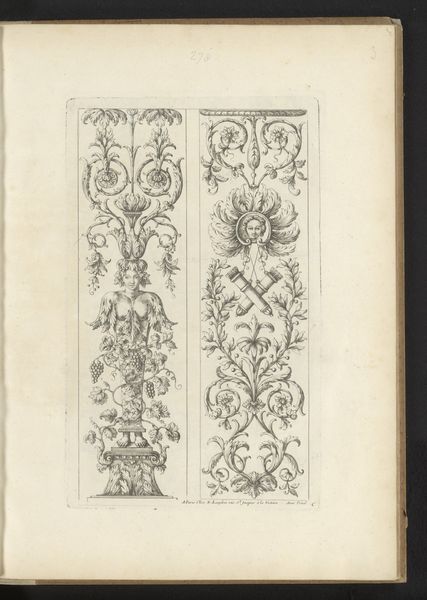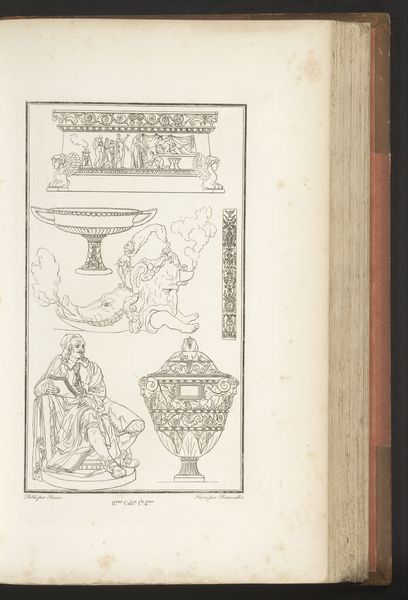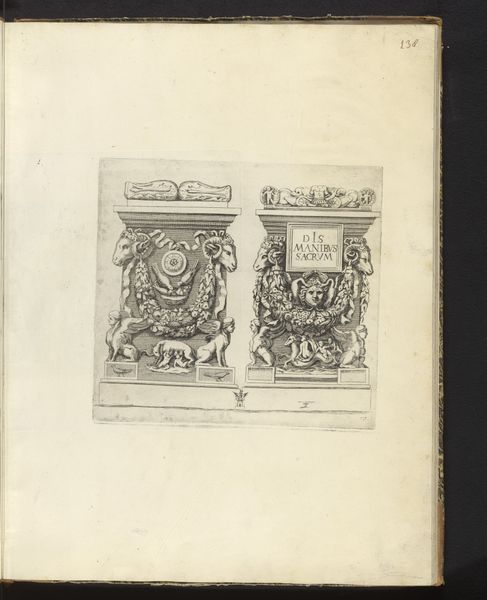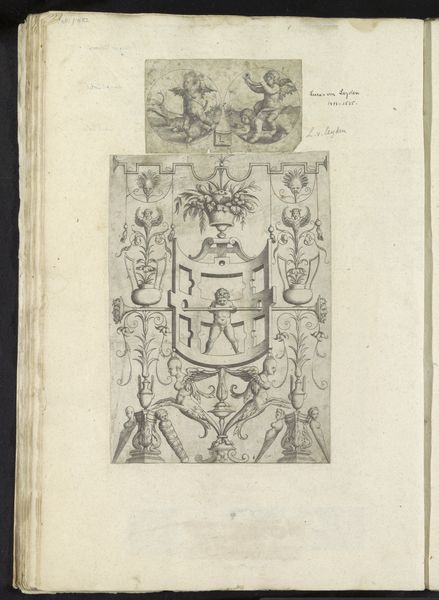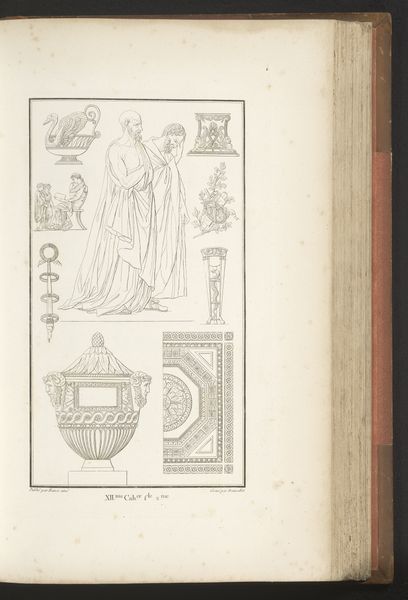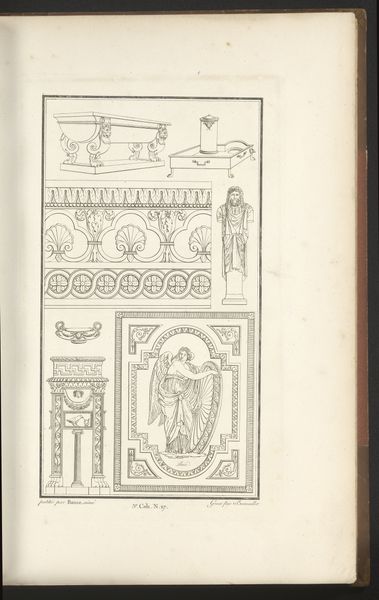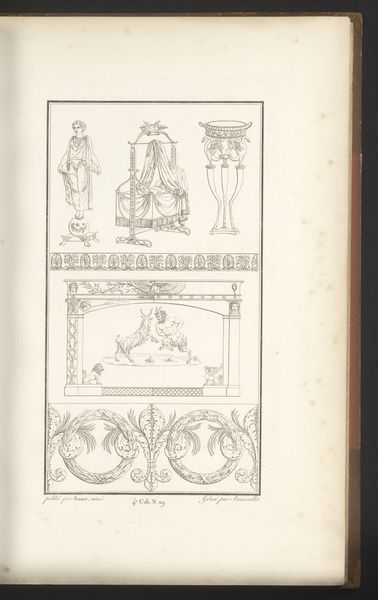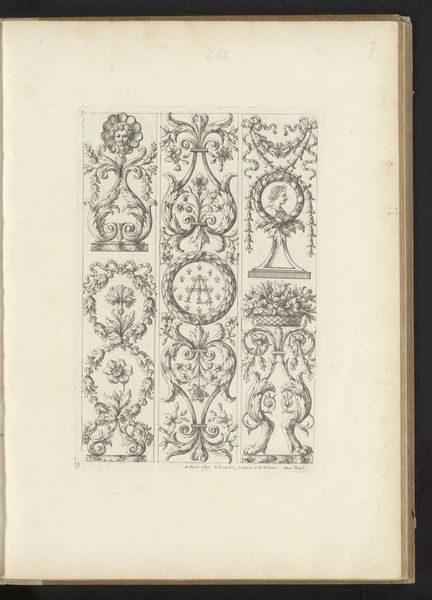
drawing, ink, engraving
#
drawing
#
allegory
#
baroque
#
figuration
#
ink
#
engraving
Dimensions: height 304 mm, width 188 mm
Copyright: Rijks Museum: Open Domain
Curator: Welcome to the Rijksmuseum. We're standing before "Two Panels with Caryatids," an engraving made between 1650 and 1703 by Paul Androuet Ducerceau. Editor: The immediate impression is one of rigid elegance. The stark lines of the engraving emphasize the contrast between the idealized human forms and the almost overwhelming ornamentation. Curator: Precisely. Ducerceau employs a rigorous formalism in the composition. The bilateral symmetry in the first panel, for example, underscores a clear hierarchical structure. Observe how the caryatid’s body integrates with the vase and is supported by scrolling foliage, while she’s topped with palm fronds. Editor: That’s one way of putting it. I can’t help but view these caryatids through the lens of power and representation. As supporting architectural members, rendered here as seemingly nude or lightly draped female figures, what does it mean to see the feminine form so idealized but simultaneously burdened? And in relation to whom? These images were not created in a vacuum. Curator: The figures serve as allegorical references, classical allusions intended to elevate the aesthetic and cultural milieu of their patron. Look at the formal repetition and balance; each detail serves a compositional purpose. The snakes, for instance. Editor: The snakes flanking the caryatid might allude to dangerous, perhaps deceptive qualities being assigned to the feminine form in relationship to virtue, especially when we understand their history as phallic symbols—or in opposition to classical representations of female wisdom. What's particularly jarring is seeing skulls adorn the vase form on the left panel. Whose mortality is being highlighted and to what end? Curator: I concede that the inclusion of such symbolism does introduce a layer of complexity to our reading of this composition, one that perhaps transcends mere decorative function. And it should prompt further consideration about power, control and how they relate to these visual markers. Editor: This is precisely the conversation we need to be having when considering pieces such as this: it isn't just about style. It’s imperative to consider who benefits from, and who is made vulnerable by, this kind of imagery. Curator: Yes, this seemingly ornamental artwork compels us to explore historical contexts and interpret visual clues, moving past just aesthetics to understand more profound symbolic weight. Editor: Hopefully, our dialogue has illuminated some of those symbolic and historical nuances embedded within this decorative image.
Comments
No comments
Be the first to comment and join the conversation on the ultimate creative platform.
